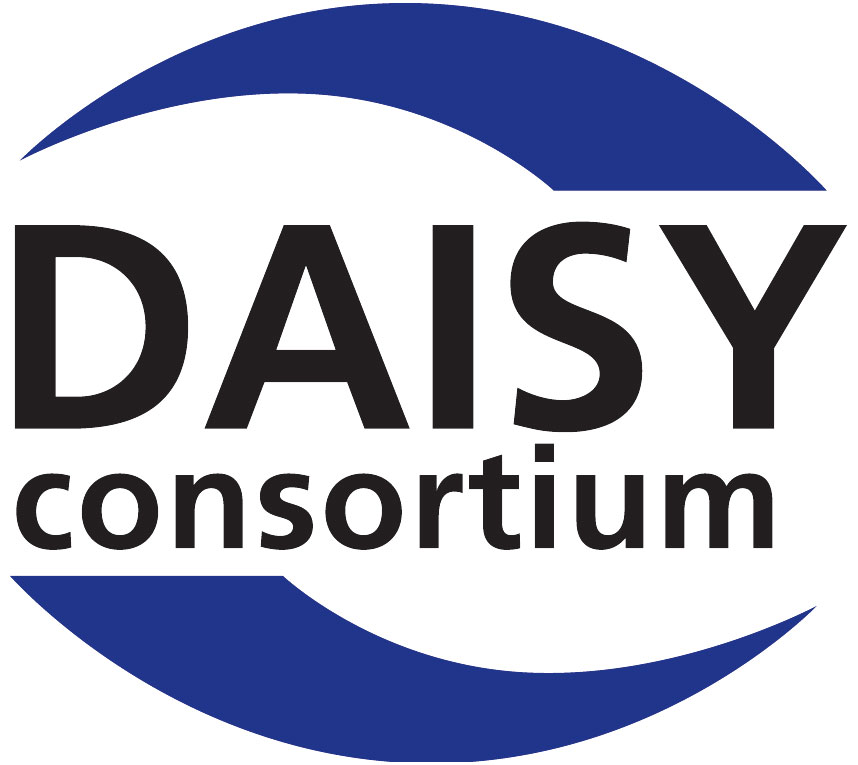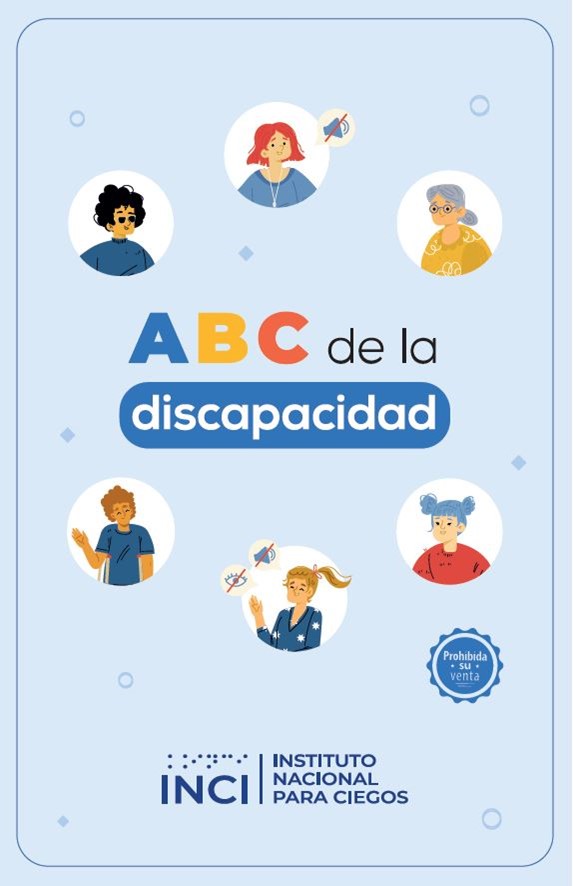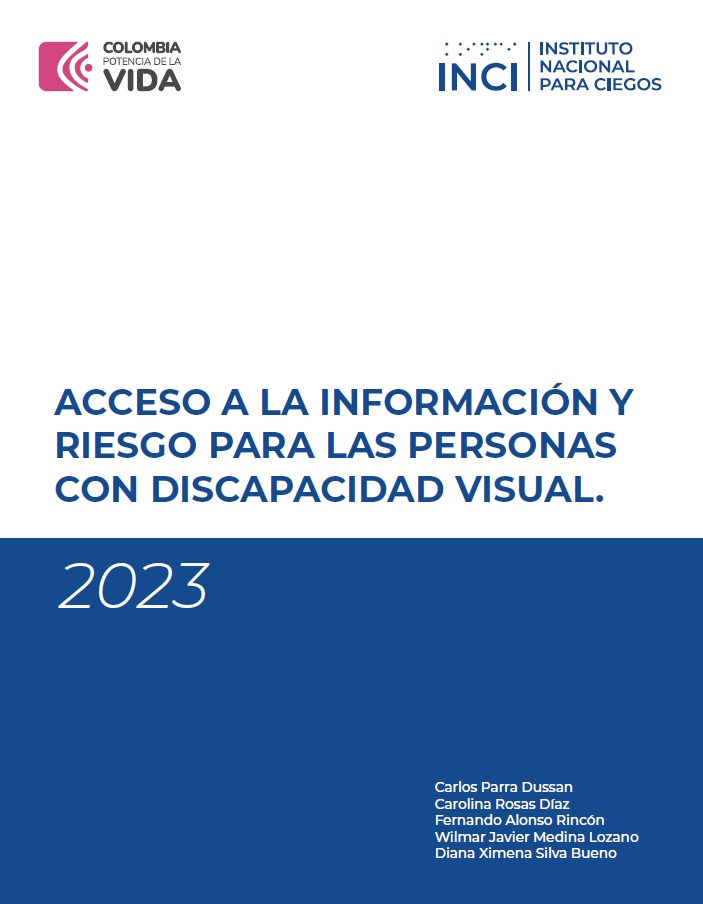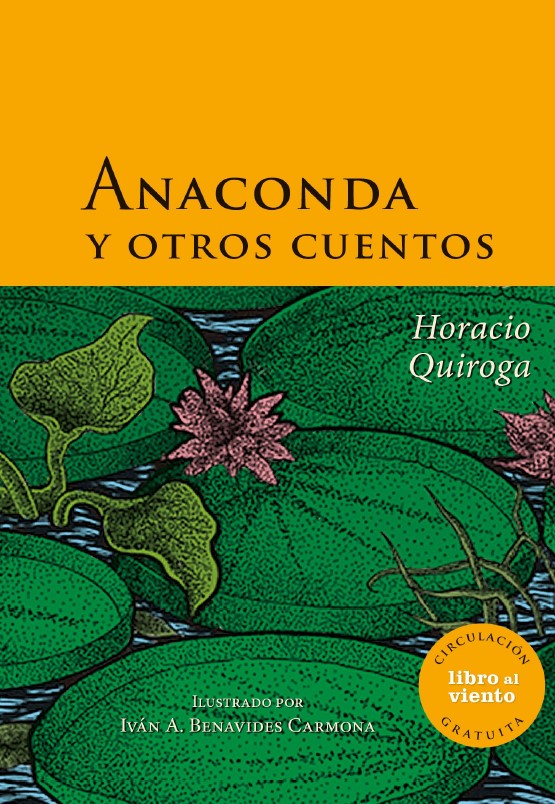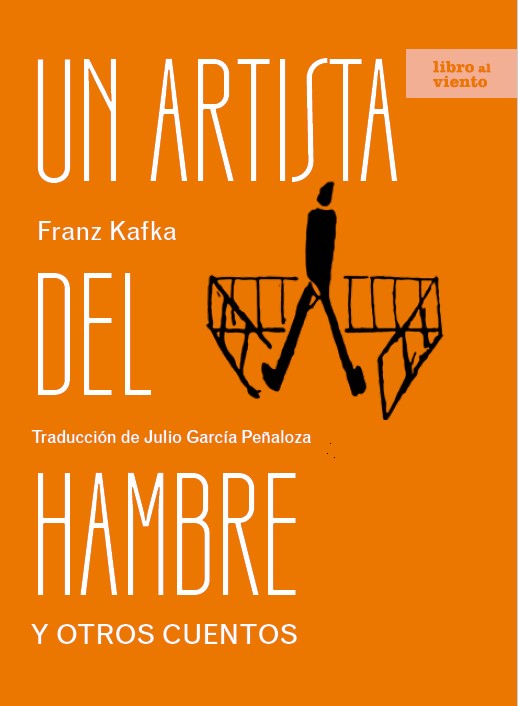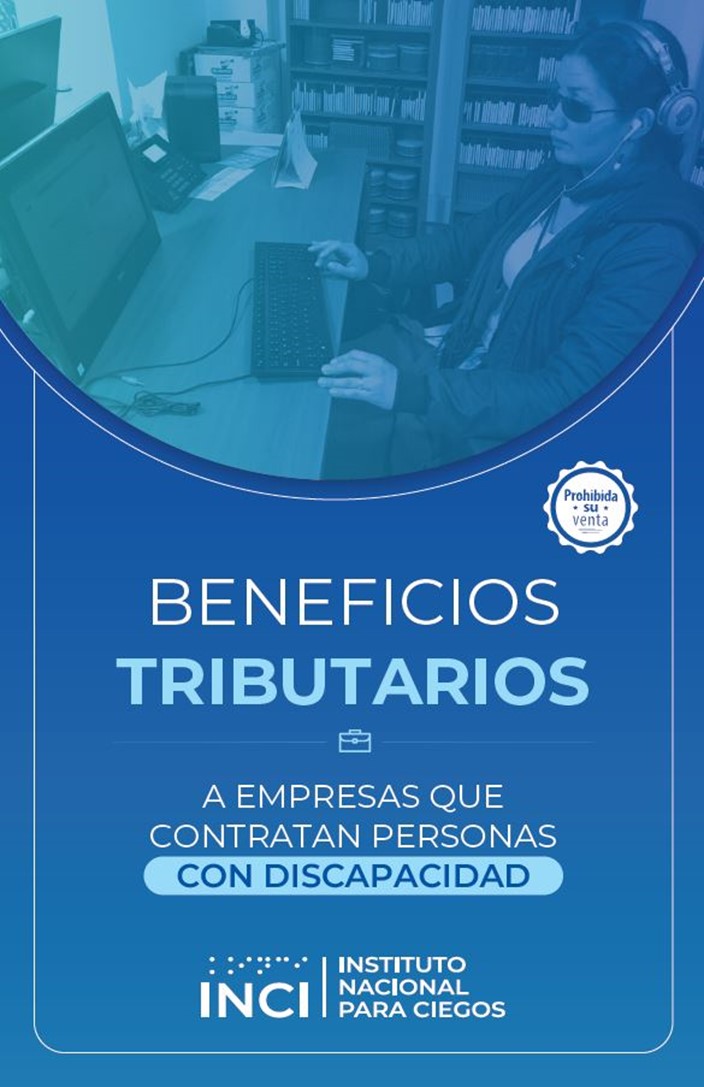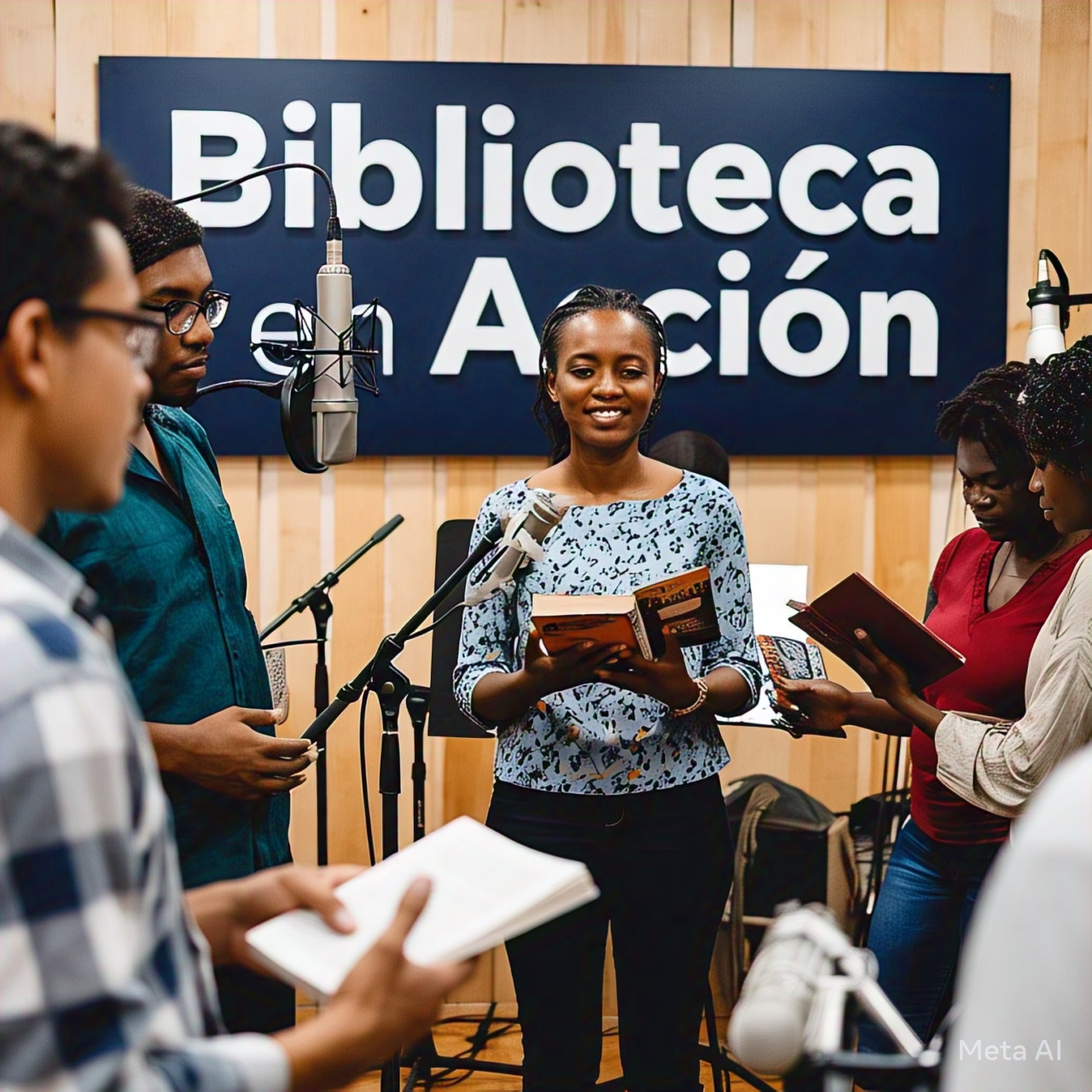Listar Inclusión Social por título
Listar Inclusión Social por título
Mostrando ítems 1 al 20 de 202
Lista de resultados
-
Resumen(Imprenta Nacional para Ciegos, 2024)Según la OMS, la discapacidad es un término general que abarca las deficiencias, las limitaciones de la actividad y las restricciones de la participación. Las deficiencias son problemas que afectan a una estructura o ...... Ver más
-
Resumen(Instituto Nacional para Ciegos-INCIBogotá, 2022)El presente texto contiene la compilación de las ponencias que se presentaron el día 17 de agosto del año 2022 en el evento académico virtual “Avances y dificultades del Peatón Ciego”, el cual fue organizado por el Instituto ...... Ver más
-
Resumen(Bogotá, 2021)La hoja de cálculo es uno de los aplicativos más potentes de la suite de programas de oficina. Con el fin de aprovechar su potencial, utilícela adecuadamente y de acuerdo con sus especificaciones, haciendo uso de la modalidad ...... Ver más
-
Resumen(Instituto Nacional para Ciegos -INCIBogotá, 2021)El documento de texto es la unidad de información más utilizada a nivel interno en las entidades y empresas con destino a los ciudadanos, por lo que es fundamental que al estar en medios digitales cuente con accesibilidad, ...... Ver más
-
Resumen(Instituto Nacional para Ciegos -INCIBogotá, 2021)Los programas de presentación son muy utilizados y requieren de condiciones de accesibilidad, más cuando ellos se distribuyen a través de los sitios Web. Mediante las siguientes orientaciones haga que estos documentos ...... Ver más
-
Resumen(Instituto Nacional para Ciegos-INCI, 2023)En este texto se compilan cuatro de las ponencias presentadas en los eventos “Personas con discapacidad en situación de riesgo” y “Día internacional del acceso a la información”, los cuales fueron organizados por el Grupo ...... Ver más
-
Resumen(Bogotá Alcaldía Mayor de BogotáBogotá, )Recordando sus primeras impresiones sobre el Japón, Lafcadio Hearn anotó en su cuaderno de apuntes: “El primer hechizo de Japón es tan intangible y volátil como un perfume”. Seducido por el país al que llegó como corresponsal ...... Ver más
-
Resumen(Bogotá́ Alcaldía Mayor de BogotáBogotá, )Lector apasionado de varios maestros clásicos del género (Edgar Allan Poe, Anton Chéjov, Guy de Maupassant, Jack London o Rudyard Kipling) Quiroga aplicó algunas de sus propuestas teóricas a gran parte de su producción ...... Ver más
-
Resumen(Instituto Distrital de las Artes (Bogotá), 2023)“Porque solo él sabía lo que ningún otro entendido podía comprender: lo fácil que era ayunar. Era la cosa más fácil del mundo.” (en “Un artista del hambre”)... Ver más
-
Resumen(2024)El audio narra un resumen sobre la literatura colombiana en diferentes temáticas sus expresiones culturales, costumbres, cultura, paisajes, viday costumbres problemas sociales, conflictos armados, se mencionan los autores ...... Ver más
-
Resumen(Instituto Nacional para Ciegos INCI, 2024)¿Qué beneficios puede tener un empresario al incluir personas con discapacidad en su organización?... Ver más
-
Resumen(Instituto nacional para ciegos INCI, 2025)Programa radial dedicado a la lectura, la escritura y las bibliotecas. Este es un espacio para recomendaciones de los mejores libros y sus autores, temáticas y tendencias de lecturas de la Biblioteca Virtual para Ciegos INCI.... Ver más
-
Resumen(Instituto nacional para ciegos INCI, 2025)Programa radial dedicado a la lectura, la escritura y las bibliotecas. Este es un espacio para recomendaciones de los mejores libros y sus autores, temáticas y tendencias de lecturas de la Biblioteca Virtual para Ciegos INCI.... Ver más
-
Resumen(Instituto Nacional para Ciegos INCI., 2025)Programa radial dedicado a la lectura, la escritura y las bibliotecas. Este es un espacio para recomendaciones de los mejores libros y sus autores, temáticas y tendencias de lecturas de la Biblioteca Virtual para Ciegos INCI.... Ver más
-
Resumen(Instituto Nacional para ciegos - INCI, 2025)Programa radial dedicado a la lectura, la escritura y las bibliotecas. Este es un espacio para recomendaciones de los mejores libros y sus autores, temáticas y tendencias de lecturas de la Biblioteca Virtual para Ciegos INCI.... Ver más
-
Resumen(Instituto Nacional para ciegos - INCI, 2025)Programa radial dedicado a la lectura, la escritura y las bibliotecas. Este es un espacio para recomendaciones de los mejores libros y sus autores, temáticas y tendencias de lecturas de la Biblioteca Virtual para Ciegos INCI.... Ver más
-
Resumen(Instituto Nacional para ciegos - INCI, 2025)Programa radial dedicado a la lectura, la escritura y las bibliotecas. Este es un espacio para recomendaciones de los mejores libros y sus autores, temáticas y tendencias de lecturas de la Biblioteca Virtual para Ciegos INCI.... Ver más
-
Resumen(Instituto Nacional para ciegos - INCI, 2025)Programa radial dedicado a la lectura, la escritura y las bibliotecas. Este es un espacio para recomendaciones de los mejores libros y sus autores, temáticas y tendencias de lecturas de la Biblioteca Virtual para Ciegos INCI..... Ver más
-
Resumen(Instituto Nacional para Ciegos INCI, 2025)Programa radial dedicado a la lectura, la escritura y las bibliotecas. Este es un espacio para recomendaciones de los mejores libros y sus autores, temáticas y tendencias de lecturas de la Biblioteca Virtual para Ciegos INCI.... Ver más
-
Resumen(Instituto Nacional para Ciegos INCI, 2025)Programa radial dedicado a la lectura, la escritura y las bibliotecas. Este es un espacio para recomendaciones de los mejores libros y sus autores, temáticas y tendencias de lecturas de la Biblioteca Virtual para Ciegos INCI.... Ver más



